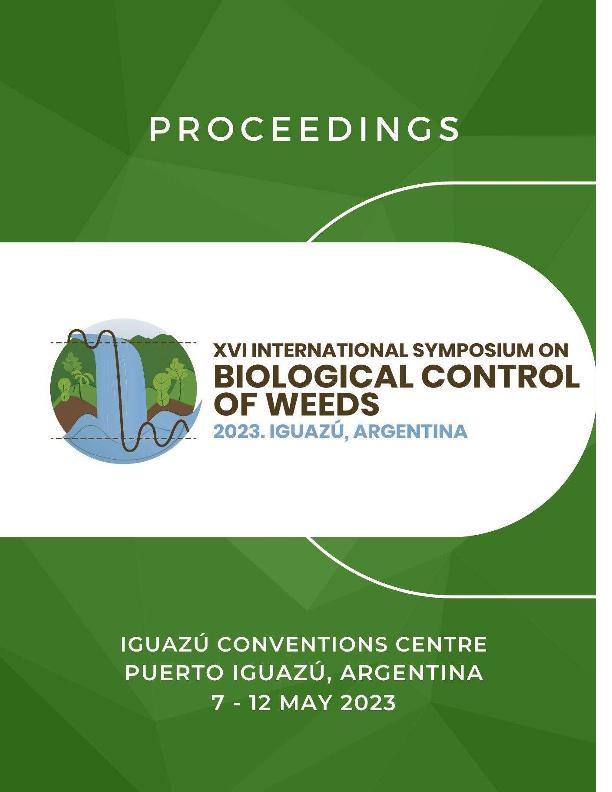Evento
Nassella trichotoma (Poales:Poaceae) crown and root rot diseases in Argentina revisited: preliminary results
Tipo del evento:
Simposio
Nombre del evento:
XVI International Symposium on Biological Control of Weeds
Fecha del evento:
07/05/2023
Institución Organizadora:
Fundación para el estudio de especies invasivas;
Centro de Recursos Naturales Renovables de la Zona Semiárida;
Título del Libro:
Proceedings of the XVI International Symposium on biological control of weeds
Editorial:
International Symposium on biological control of weeds
ISBN:
978-631-90256-0-6
Idioma:
Inglés
Clasificación temática:
Resumen
Nassella trichotoma, a grass species native to South America, has become a noxious weed in many regions of the world. In Australia and New Zealand, it has been targeted for classical biological control. Initial studies to identify potential fungal biocontrol agents started in 1999 in Argentina and ended three years later having discarded a rust and a smut fungus. Work on a crown rot associated with tussock die-back symptoms, and believed to be caused by a corticioid fungus at the time, was less detailed, and abandoned with inconclusive results. Almost 20 years later the problem is being revisited, with research focused on plants with die-back symptoms. New surveys have been conducted and diseased plants collected and studied in the laboratory. Surprisingly, five different corticioid fungi were found associated with the crowns and roots of declining tussocks. Several species of Fusarium, belonging to four different species complexes, were also isolated from crowns and/or roots of declining tussocks, while Bipolaris sp. was isolated from a seed of N. trichotoma recovered from a burial trial within a patch of diseased plants. Artificial inoculations with all the obtained isolates were carried out on healthy N. trichotoma plantlets. After many failed inoculation experiments, it was concluded that the corticioid fungi were not acting as pathogens but rather as secondary colonisers on senescing plant material. In contrast, all the plantlets inoculated with Bipolaris sp. and Fusarium spp. developed some degree of crown and root discoloration and rot, and the inoculated fungi were all re-isolated from affected tissues. Because these pathogens were also found associated with seeds recovered from the soil around diseased plants, healthy seeds were inoculated with Bipolaris sp. and one Fusarium isolate in a separate experiment, causing a great decrease in their germination compared with un-inoculated ones. Surviving seedlings were less vigorous than those grown from healthy seeds. Overall, although all the tested isolates (other than the corticioid ones) were shown to cause some level of disease, none of them produced the die-back symptoms observed in the field. It is now presumed those are caused by more than one of these pathogens acting together in an additive or synergic manner. Moreover, at least two of them have been shown to have an impact on plant recruitment processes. More work is needed to clarify the etiology of this disease in Argentina and to fully assess the suitability of the involved fungi as biocontrol agents.
Palabras clave:
Nassella trichotoma
Archivos asociados
Licencia
Identificadores
Colecciones
Eventos(CERZOS)
Eventos de CENTRO REC.NAT.RENOVABLES DE ZONA SEMIARIDA(I)
Eventos de CENTRO REC.NAT.RENOVABLES DE ZONA SEMIARIDA(I)
Citación
Nassella trichotoma (Poales:Poaceae) crown and root rot diseases in Argentina revisited: preliminary results; XVI International Symposium on Biological Control of Weeds; Iguazú; Argentina; 2023; 48-48
Compartir




